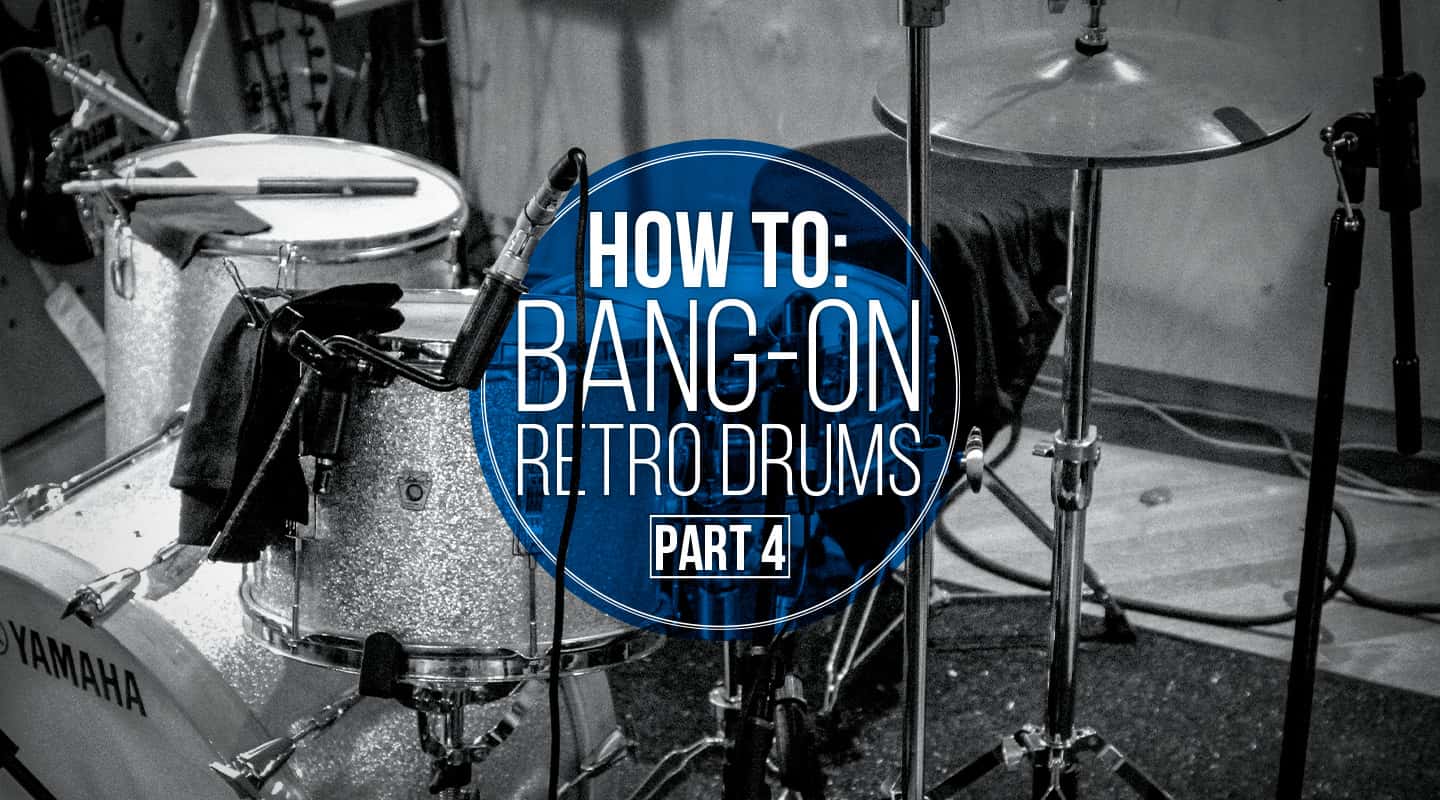
How to: Bang-on Retro Drums Part 4
Tired of drums sounding big, wide and boring. Turn back the clock with us as we re-create drum sounds from the ’50s, ’60s and ’70s.
The ’70s & Beyond 24 Tracks & Total Control
Tutorial: Michael Carpenter
By the time we hit the ’70s, very quickly 16-track, then 24-track became the norm. Recording as an ensemble was no longer needed, as each instrument had its own tracks. The drums were spread out over four to six tracks, allowing for more control in the mixing process. Compressing to tape became less critical. Studios that were once big, open recording spaces started to be partitioned off for a more controlled sound, allowing for increased creative options at mix time. Valve consoles were replaced with transistor-based versions, with greater EQ and routing flexibility, allowing the drums to be sculpted tonally. Drums were made tonally dead, with bottom heads starting to be taken off toms and mics put inside the drums, or gated heavily for greater separation. Drummers devised all kinds of ways to muffle, mute and control every ambience and resonance from the kit, including copious amounts of gaffer tape, or pieces of felt that flopped up as the drum was struck and rested back on the head. Drums were tuned deeper for a fatter tone. Small diaphragm condensers became the norm for overheads and hi hats, and producers were looking for a more hi-fi approach to drum recording. It was all about a controlled, focused, deep, percussive tone that screamed ‘high quality’. Ambience was generally a thing of the past.

THE ’70s & BEYOND 24 TRACKS & TOTAL CONTROL
Key listening tracks:
Rhiannon – Fleetwood Mac
Hotel California – The Eagles
Young Americans – David Bowie
Jive Talking – The Bee Gees
Close To You – The Carpenters

The more I know about the original approaches, the more authentic my results are when emulating them in a contemporary setting
THE EXCEPTIONS
Of course, there are always exceptions to every genre. In the early ’60s, Phil Spector took to drum recording with a ’50s approach. In the ’70s, drummers like John Bonham and Roger Taylor tuned their kits to sound like Big Band drummers of the ’40s and ’50s. Nevertheless this should give you a general guideline to the way engineers captured the drums over a critical period in pop history.
Essentially, when approaching retro drums, you have to break down your own preconceived ideas of how drums should be played and recorded. Once you do that, you can get really creative with the way your drum sounds present in your records. It may just be the thing that separates you from everyone else.
















RESPONSES